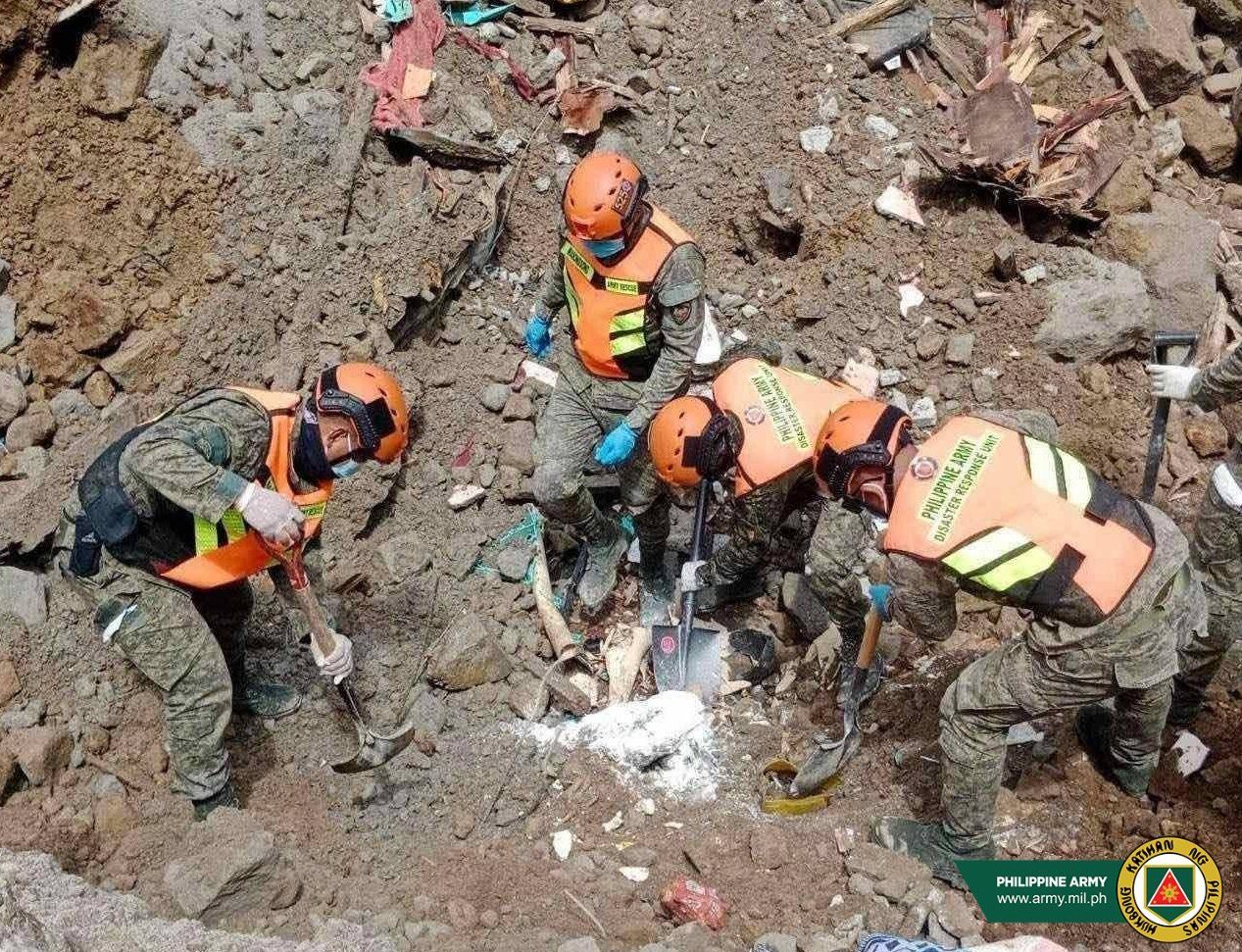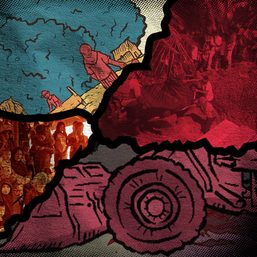SUMMARY
This is AI generated summarization, which may have errors. For context, always refer to the full article.

DAVAO ORIENTAL, Philippines – The death toll in the deadly landslide that devastated the mining village of Masara in Maco town, Davao de Oro province rose to 85 on Wednesday night, February 14, as rescue operations shifted to the retrieval of the dead a week after the tragedy.
The Davao de Oro provincial government said the number of missing people was down to 38 as of 7 pm. At least 32 others were reported injured in the February 6 landslide.
Of the dead, at least eight have remained unidentified and their bodies unclaimed as of posting time.
Many of those who died were workers of the Apex Mining Corporation who were about to leave the area after a day’s hard work at a mining site. Some of them were already in buses and a jeepney that were subsequently buried by mud and rocks.
Douglas Dumalagan, Masara’s barangay chairman, said 35 of those who were confirmed dead were residents of his village, and nine other villagers have remained missing.
Dumalagan said his house was spared during the landslide, but among those who died were four of his cousins.
“I was with my family inside our house when the landslide hit our village on the night of February 6. It was dark at the time due to a power outage. As we fled for safety, I saw the landslide burying the houses of my neighbors. My family was fortunate to have escaped. Miraculously, the landslide spared my house, stopping just in front of my balcony,” he told Mati City-based Bigwasi Online Radio on Thursday, February 15.
Dumalagan recounted that two days before the landslide, villagers had sought refuge in a nearby school designated as an evacuation area after the local government warned of a potential landslide caused by incessant heavy rain that affected the Davao Region.
“On the tragic day of February 6, many of my constituents returned to their houses, feeling reassured as the heavy rain had ceased, and the temperature was high,” Dumalagan said.
He said the site of the landslide had been designated as a no-build zone by the local government as early as 2008, but many villagers refused to relocate. Many of them, he said, were working for Apex Mining. – Rappler.com
Add a comment
How does this make you feel?




![[Pastilan] The Great Philippine Identity Sale](https://www.rappler.com/tachyon/2024/07/great-philippine-identity-sale-july-16-2024.jpg?resize=257%2C257&crop=486px%2C0px%2C1080px%2C1080px)














There are no comments yet. Add your comment to start the conversation.